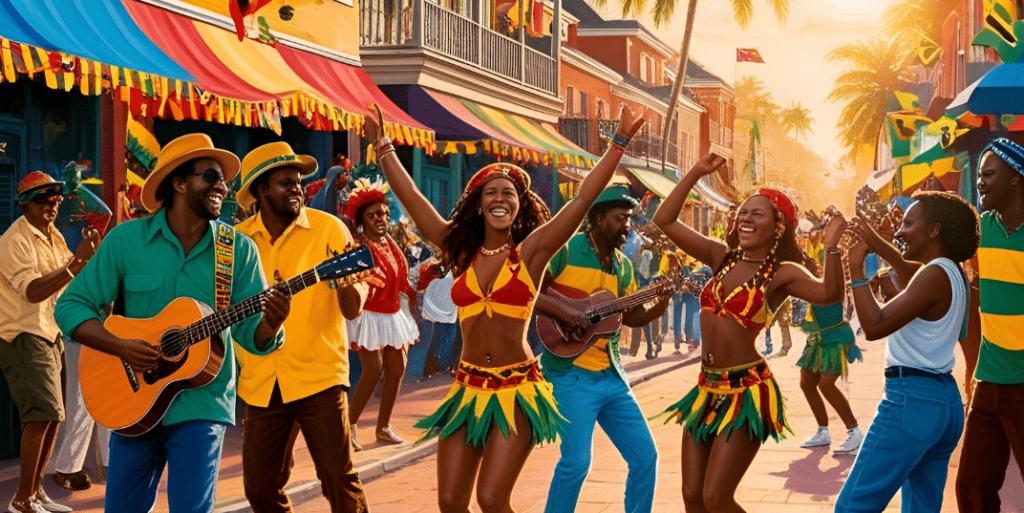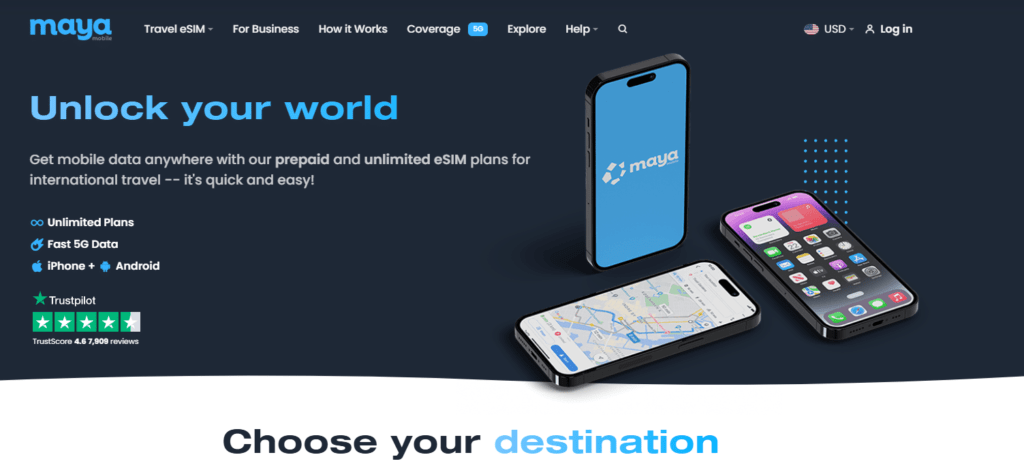Nestled along the breathtaking Adriatic Sea, Croatia is often called the land of a thousand islands....
Travel Guides
Jamaica is a tropical paradise that draws millions of visitors annually. In 2024, this enchanting Caribbean island welcomed a record 4.3 million travelers, attracted by its sun-kissed beaches, vibrant culture, and lush landscapes. It is natural to wonder: when is the best time to visit Jamaica? Let’s explore the ideal times for your Jamaican getaway, taking […]


Jamaica is a tropical paradise that draws millions of visitors annually. In 2024, this enchanting Caribbean island welcomed a record 4.3 million travelers, attracted by its sun-kissed beaches, vibrant culture, and lush landscapes. It is natural to wonder: when is the best time to visit Jamaica?
Let’s explore the ideal times for your Jamaican getaway, taking into account the weather, events, and travel costs.
The best time to visit Jamaica is from mid-December to April. This period offers stunning beaches, dry weather, and lower humidity, making it an ideal escape for those looking to get away from the winter chill back home.
While this time of year is considered peak tourist season, it comes with its own set of benefits. The warm temperatures and plentiful sunshine create a perfect atmosphere for relaxing on the beach and enjoying a variety of water activities.
Moreover, the lively vibe during these months is enhanced by a range of cultural events that add a special touch to your experience.
Jamaica's tropical climate makes it an appealing destination year-round, but understanding the seasonal variations can help you make an informed decision.
Here’s a detailed weather calendar outlining what you can expect throughout the year:
| Season | Months | Average Temperatures | Precipitation | Considerations |
| Spring | March–May | 22°C–29°C (72°F–84°F) | Low to moderate (March/April), increasing to Moderate to high in May. | Mild weather and blooming flowers — perfect for hiking. |
| Summer | June–August | 24°C–32°C (75°F–90°F) | Moderate. Frequent afternoon rain showers. | Low season with fewer crowds and lower prices. Hotter and more humid conditions than in winter. |
| Fall | September–November | 22°C–30°C (72°F–86°F) | High (September/October), decreasing to high to moderate in November. | Cooler temperatures and low prices. Great for exploring without the crowds. |
| Winter | December–February | 20°C–28°C (68°F–82°F) | Low | Ideal for escaping cold weather; higher resort prices and busy tourist hotspots. |
While we’ve provided a classic overview of the seasons, it's important to understand that Jamaica doesn't experience the traditional spring, summer, fall, and winter seasons due to its tropical climate.
In reality, the island has three main seasons:
Note: Each region has its unique weather patterns; for example, Negril generally receives the most rainfall, while Kingston experiences less rain later in the year.
Reggae Sumfest [Source: Reggae Sumfest]
Jamaica is a culturally rich destination with plenty of events and festivals throughout the year. These gatherings showcase the island's heritage, local cuisine, and, of course, its music.
Here are the best annual events in Jamaica you won’t want to miss:
The cheapest time to visit Jamaica generally falls within the off-season, which spans from July to October. During these months, you can expect increased rainfall and higher humidity, making it less appealing for some travelers.
However, there are several advantages to traveling during this period. You can take advantage of lower prices on flights, cruises, and accommodations, while also enjoying a more tranquil atmosphere with fewer crowds at pools and beaches.
Jamaica has two shoulder seasons that provide a favorable balance between good weather and smaller crowds. These occur from mid-April to June and from November to mid-December.
During the shoulder seasons, you can generally expect fewer rainy days and plenty of sunny skies. This is particularly advantageous if you’re arriving on a cruise ship, as there will be fewer crowds at the ports.
The period from November to mid-December offers especially great conditions — rainfall diminishes, hotels have wrapped up renovations, and both beaches and ports remain less congested as most tourists hold off their vacations until the Christmas and New Year period.
Prices during peak tourist seasons can soar, especially for accommodations and travel. Check out the table below for the cost differences you might encounter:
| Item | Peak Season Price | Shoulder Season Price | Off-Season Price |
| Cup of Coffee | $4.00 | $2.50 | $2.50 |
| Car rental (per day) | $60–$90 | $40–$60 | $30–$50 |
| Hotel (budget option) | Starting at $120 | Starting at $80 | Starting at $60 |
| Local beer | $5–7 | $3 | $3 |
| Attractions (entry fees) | $150 (e.g., swimming with dolphins) | $120 (same activity) | $90 (same activity) |
When planning a trip to Jamaica, 10 days is ideal for a well-rounded experience. This duration allows ample time to savor the sun, explore the sights, and embrace the vibrant local culture without feeling rushed.
However, if you prefer a slightly shorter trip, a week-long itinerary can still provide a fulfilling experience:
This itinerary offers a perfect blend of relaxation and adventure, allowing you to fully enjoy the beauty and culture of Jamaica in just seven days. If you can extend your stay to ten days, you'll have even greater opportunities to explore and experience everything the island has to offer.
Packing wisely can ensure a more comfortable and enjoyable trip to Jamaica. Here are some guidelines on what to bring:
When packing for Jamaica, it's important to choose clothing that will keep you comfortable in the tropical climate. Lightweight fabrics like cotton and linen are your best bet, as they allow for breathability and help you stay cool in the heat.
You'll want to pack at least two or three swimsuits to enjoy days spent at the beach or by the pool. Consider including a few cover-ups or sarongs for easy transitions from sunbathing to enjoying a beachside lunch or a stroll along the shore.
In addition, it's wise to bring a lightweight jacket or sweater. While the weather is generally warm, evenings can sometimes be cooler, especially near the coast or in higher elevations.
If you plan to dine at upscale restaurants or attend special events, it’s a good idea to bring along a couple of nicer outfits. Lightweight sundresses or casual dresses for women and button-up shirts with lightweight trousers or shorts for men can elevate your look while still keeping you comfortable.
As for footwear, comfortable sandals should be at the top of your packing list. They are perfect for strolling along the beach, relaxing by the pool, and enjoying casual outings in the warm weather. Look for sandals with good arch support, which can make a big difference in your comfort level when walking on sandy or uneven surfaces.
Sturdy shoes are also a must if you plan to hike or explore Jamaica's beautiful national parks and rugged terrain. Opt for lightweight hiking shoes or trail sneakers that provide excellent grip and ankle support, as well as breathability to keep your feet cool during your adventures.
If you're planning to swim in rocky areas, don't forget to pack a pair of water shoes. These lightweight, quick-drying shoes will protect your feet from sharp rocks and coral while giving you the stability you need for walking in and out of the water.
When packing for your trip to Jamaica, it's essential to include the right accessories and other essentials to enhance your comfort and overall experience. Here’s a list of items to consider:
For American citizens planning to visit Jamaica, the visa requirements are quite favorable. U.S. citizens don’t need a visa for tourism as long as their stay is 90 days or less.
It’s important to ensure that the passport is valid for the entire duration of the visit and ideally has at least six months of validity beyond the arrival date.
Staying connected while exploring Jamaica is essential for navigating, sharing experiences, and keeping in touch with family and friends back home. Utilizing an eSIM can be an excellent option for travelers, offering convenience without the need for physical SIM cards.
Here are three of the top eSIM providers in Jamaica to consider:
Holafly offers unlimited data plans specifically designed for travelers. Their eSIM works seamlessly across the island, making it ideal for tourists who want to stay connected without worrying about running out of data.
The setup process is simple, and you can activate your eSIM upon arrival in Jamaica, ensuring you’re ready to go.

Maya Mobile specializes in short-term data plans tailored for visitors who need flexibility. They provide various data options, allowing travelers to choose based on their specific needs. The eSIM can be activated instantly after purchase, and their customer service is noted for being particularly helpful for tourists.
Airalo provides a wide range of data plans that allow travelers to select options based on their anticipated data usage. They offer both pay-as-you-go plans and larger packages for heavy data users.
Here’s a table comparing the plans and pricing for the three eSIM providers mentioned above:
| Provider | Plans | Pricing |
| Holafly | Unlimited data | From $11.90 to $63.90 |
| Maya Mobile | 1 GB, 3 GB, 5 GB, 10 GB, 20 GB | From $6.99 to $70.99 |
| Airalo | 1 GB, 2 GB, 3 GB, 5 GB, 10 GB, 20 GB | From $9.00–$45.00 |
The hottest month in Jamaica is usually August when temperatures can reach around 32°C (90°F). It's often quite humid, so staying hydrated and using sun protection is essential.
January or February are typically the best months to visit Jamaica. The weather is warm and comfortable, averaging about 27°C (81°F), with low humidity and minimal rain — perfect for beach activities and exploring.
Absolutely! A week in Jamaica is great for exploring its beautiful beaches, vibrant culture, and various attractions. You'll have enough time for relaxation and adventure, making your trip enjoyable and memorable.

